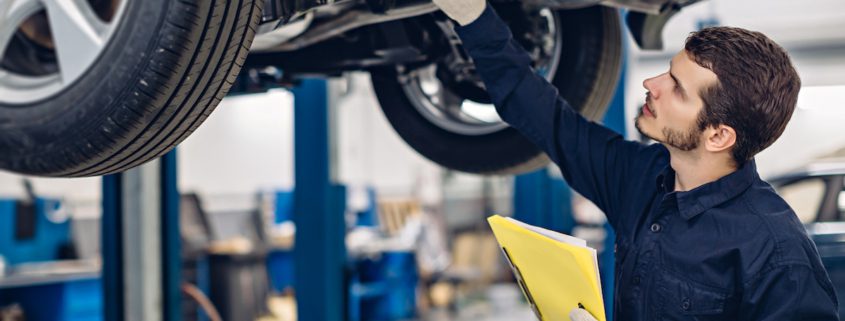Filing an Auto Insurance Claim: OEM vs Aftermarket Parts

National Safety Council stats claim there are over 12 million motor vehicle accidents involving more than 20 million vehicles every year. That’s a lot of bent fenders, crumpled trunks and bashed in doors in need of repair. If you drive, the odds are good that sooner or later you’ll be filing an auto insurance claim, looking for repair shop estimates and making a decision between OEM vs. aftermarket parts. Here’s what you need to know to help you make the better choice regarding OEM vs. aftermarket parts.
OEM Vs. Aftermarket Parts
If you go to your car dealership, they’re going to push OEM (Original Equipment Manufacture) replacement parts. Nothing wrong with that. OEM parts have a number of advantages (we’ll get to those in a minute), but check your car insurance policy first. Most standard comprehensive auto insurance policies specify using functionally equivalent parts because they usually cost less than OEM parts. Your policy may permit you to use OEM replacement parts, but it may also stipulate that you share some of the cost.
Pros and cons of OEM vs. Aftermarket parts?
The OEM part is going to be exactly what you need. The part will be guaranteed to work just like the part you’re replacing. It will also be warranted by your dealer, as will be the labor in most cases. All good things, but as mentioned, OEM parts cost more – sometimes as much as 60% more than equivalent after-market parts. Where you can buy them is pretty limited; unless you have time to scour the Internet, you’ll probably have to get them from your dealer (and pay the dealer mark-up). You may be paying a premium for nothing more than a brand name, since many after-market parts perform just as well.
Aftermarket parts are almost always cheaper than OEM, which means your auto insurance company will heartily endorse their use. In most cases, you’ll also have a greater variety of after-market brands to choose from with a wider range of competitive prices and greater availability. If you go with a reputable brand, you can be pretty confident that the quality is on a par with OEM. Be aware, however, that quality can be variable, especially with obscure or discount brands, and some parts, particularly refurbished parts, don’t include a warranty. You also need to be careful that you’re not buying hot parts off the black market. You don’t want your car impounded as evidence in a federal racketeering case! Your safest bet is to use a trustworthy mechanic or repair shop.
Checking references and track records has never been easier, so do your homework first. Your car insurance provider or agent can probably supply you with a list of preferred repair shops, too.

 EINSURANCE
EINSURANCE EINSURANCE
EINSURANCE EINSURANCE
EINSURANCE